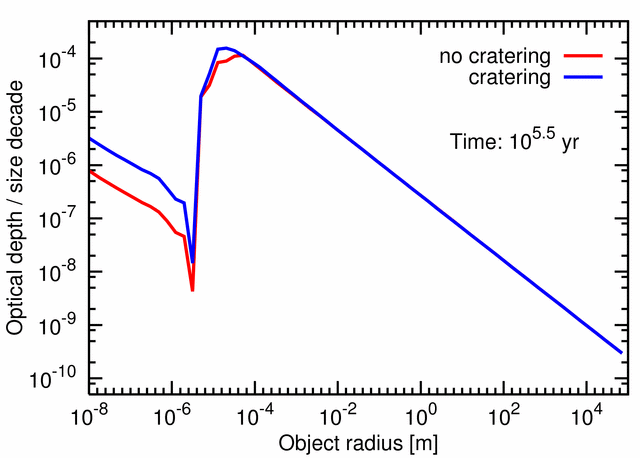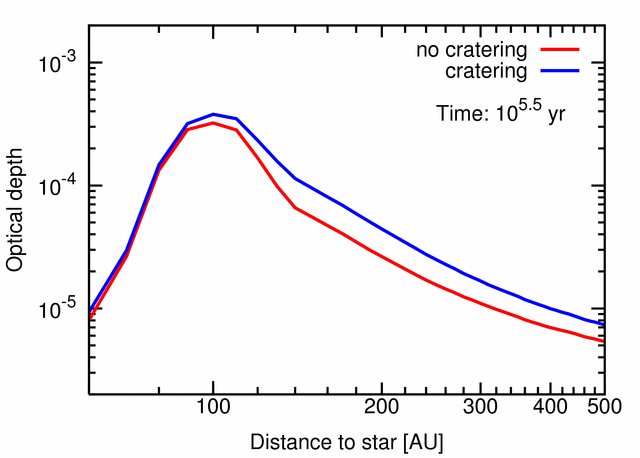We model the size distribution and the spatial distribution of the material in so-called debris discs around main-sequence stars. These discs, which are considered as remnants of the formation of planetary systems, are ensembles of objects from sub-micron-sized dust to planetesimals with diameters up to hundreds of kilometres.
The models developed are a numerical implementation of the kinetic theory of statistical physics as well as analytic approximations intended for verification and interpretation. The discs are assumed to be rotationally symmetric and dense enough for collisional timescales to be shorter than the timescales of radial transport. Their physics is assumed to be driven by mutual collisions in the gravity and radiation field of a central star.
It is confirmed that the expected size distribution in the dust regime is wavy, and that the cross section area is dominated by particles with sizes somewhat above the radiation pressure blowout limit (about a micron for sun-like stars), i.e. by barely bound grains on highly eccentric orbits. The radial distribution of dust produced by a planetesimal belt is dominated by the same grains. As a result, the radial slope of surface density close to -1.5 is expected. This corresponds to a power-law index of the surface brightness profile between -2 and -4, being consistent with observations of resolved debris discs (Krivov et al., A&A 455 (2006)).

The evolution of the size distribution of a debris disc at a distance of 100 AU around an A star. One can see the depletion of smallest grains, which are unbound and blown out by the stellar radiation pressure. As a result of this depletion, the barely bound grains are overabundant and, in turn, reduce the number of the next larger objects. A well-known wave forms. The actual shape of the wave is determined by the model for the collisional outcomes (as shown), the material properties, and the relative velocities in the disc.
 The dust produced in a planetesimal belt (here: at 100 AU) spreads outward due to stellar radiation pressure. A characteristic radial profile with power-law index -1.5 is established. If cratering collisions are neglected (see above), the optical depth in the region of the belt (the "birth ring") is enhanced by a population of (sub-)millimetre grains. Cratering collisions efficiently erode this population.
The dust produced in a planetesimal belt (here: at 100 AU) spreads outward due to stellar radiation pressure. A characteristic radial profile with power-law index -1.5 is established. If cratering collisions are neglected (see above), the optical depth in the region of the belt (the "birth ring") is enhanced by a population of (sub-)millimetre grains. Cratering collisions efficiently erode this population.
